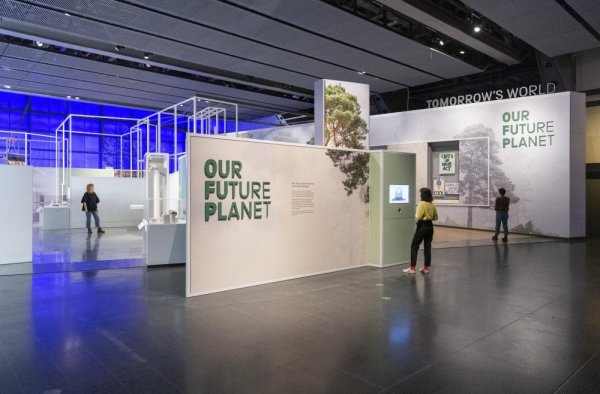“I used to think the top environmental problems were biodiversity loss, ecosystem collapse and climate change. But I was wrong”, noted the US Advisor on Climate Change Gus Speth once. “The top environmental problems are selfishness, greed and apathy, and to deal with those we need a spiritual and cultural transformation. And we scientists don’t know how to do that.”
When it comes to problems like this, then we should look to institutions that are the cradles of cultural transformation: museums and cultural organizations just like the Science Museum. Globally recognized and highly influential, the Science Museum is to many of us an enchanted place, where we develop, nurture, and deepen an understanding of the world around us – often as mere children. Shell’s sponsoring of the exhibition “Our Future Planet” opening this week only proves that powerful companies are recognizing the invaluable impact of these institutions. But why is it, in our opinion, of utter importance for the Science Museum to drop Shell as a sponsor, like the UK Student Climate Network (UKSCN) together with Culture Unstained have put forward in an open letter recently?
The mindset behind Negative Emission Technologies
Nowadays, no reasonable mind would deny that for lowering greenhouse gas emissions time is of the essence. And that’s the crux: Presenting carbon capture, especially genuinely technological methods, as a principal climate solution diverts from the necessity of immediate emission cuts. After all, the most logical solution is halting the emission of greenhouse gases by not burning them in the first place. Yet, Shell and its fossil peers have a strong interest to maintain their core business of fossil fuel usage, whilst nourishing the false belief of large-scale carbon capture in the near future. Diversion framed as “technological openness” is a common strategy that societally problematic companies are known to have used for decades now.Certainly, one must sufficiently fund the development and upscaling of negative emissions technologies. Their application may become vital in the period after 2050. Even the International Panel on Climate Change (IPCC) presumes in three of its four illustrative pathways to +1,5 °C global heating a broad utilization of bioenergy with carbon capture and storage (BECCS). Nonetheless, their application is by no means a ticket to continue business as usual.
Instead of producing dystopian “mechanical trees” en masse in the same unsustainable mindset that caused our current troubles, we must urgently enact the rich portfolio of solutions that are already available and have been extensively studied by experts from various fields: eco-social taxing, constitutional anchorage of climate targets that binds decision makers to act on their promises, a renewable energy transition, adaptation measures such as “greenifying” urban areas, et cetera. And what a wonderful world we would live in, once we embrace them. The societal goal has to become this world, where societies are no longer based on the unjust exploitation of both humans and nature – the true motor of every latest crisis.
Museum Responsibilities – Four Columns of Climate Action
The Science Museum, an institution famous for its scientific rigor and engaging display, has one major lever: communication to the public. By selling this unique trait to fossil fuel companies, it undermines its core values and becomes part of the problem rather than part of the solution. It becomes a museum of the past rather than a museum for future.A museum for future opens its doors to climate strikers and listens carefully to the concerns of the young generation, majorly distressed by the prospect of ecological collapse. A museum for future transforms its own institution according to the Paris Agreement and holds its government accountable for providing sufficient transition resources. A museum for future encourages others to act, its cultural and economic partners, its stakeholders, and sponsors. But most of all, a museum for future puts its outreach to best practice. It communicates the colorful array of solutions, collective as well as individual, societal as well as ecological, it debunks technological canards and unmasks marketing feints, while nourishing a vision of a climate-just tomorrow.
“Like child labor or slavery, burning fossil fuels is no longer ethically tenable in a society of the 21st century”
put it climatologist Helga Kromp-Kolb plainly. The Science Museum has already dropped Shell as a sponsor of a climate exhibition in 2015, since the oil company sought to influence the program. It’s not too late for the Science Museum to announce herewith and ultimately to end any future fossil fuel funding and join pioneers such as the Tate Galleries (2016), the National Gallery (2018), the National Galleries Scotland and the Royal Shakespeare Company (2019) – to only name a few. The Science Museum may still redeem itself in the eyes of the generations to come. It may still join the right side of history – climate action is a after all virtue made of seized second chances.
The authors
- Florian Schlederer, founder of Museums For Future and co-organizer of the Austrian Citizen’s Petition on Climate.
- Anna Krez, conservator in private practice in Germany and member of Museums For Future.
Florian Schlederer action@museumsforfuture.org
